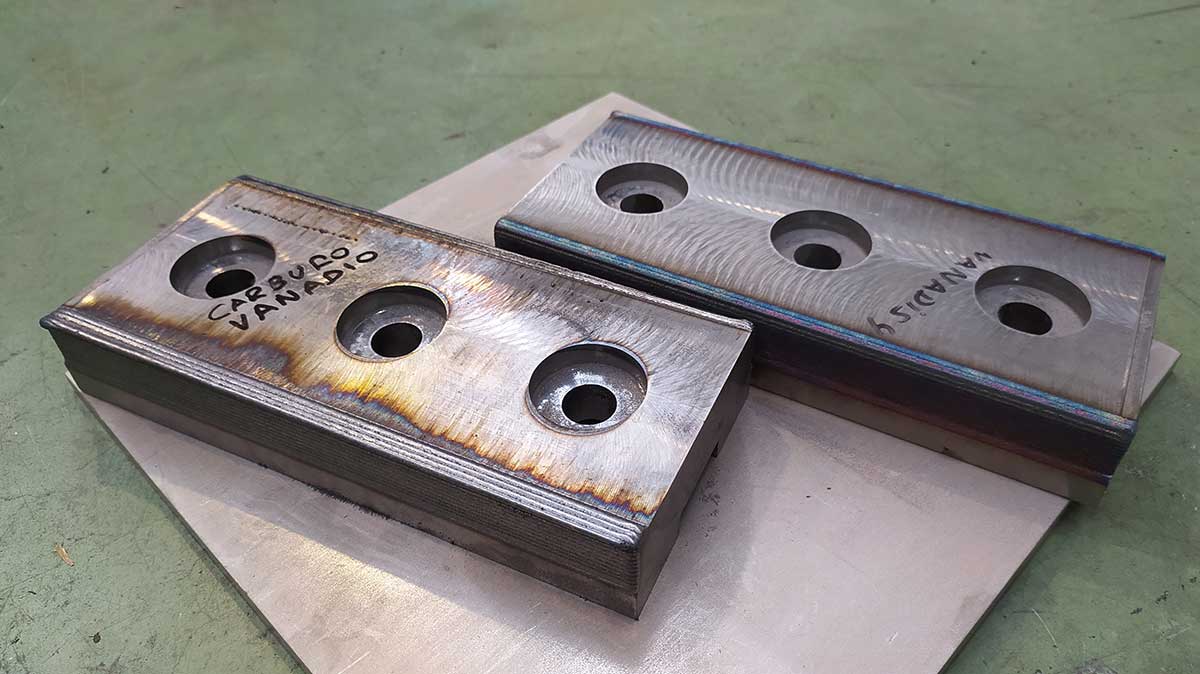CLADCUT
RECOVERY OF RECYCLING SHREDDER BLADES
Tyre shredder blades are subjected to constant fatigue in their daily processes, which greatly reduces their effectiveness and service life. In addition to the technical and economic constraints that this entails, the emergence of misalignments may lead to rotor breakage. The blades are not recovered in existing processes. When they are worn, they are directly discarded and new blades are purchased. This way of working leads to an inefficient use of resources from a production and environmental point of view.
The laser cladding technique enables the specific use of wear resistant and high strength materials in complex geometries with a high degree of process control. The technique is not implemented in industry, but its advantages would offer a significant improvement in the process of cladding damaged parts or those that require preventive maintenance.
CLADCUT has been led by DELASER and has relied on the collaboration of ZORROTZ for the validation of the final demonstrators in real conditions.

DRIVING FACTOR


 OBJECTIVES
OBJECTIVES
- Apply laser cladding technology to the recovery of recycling shredder blades.
- Specifically addressing the problem of tyre shredding due to the significant challenge of shredding tyres, although the solution to be developed could be applicable to the shredding of different materials (plastics, metal packaging, etc.) and is one of the long-term objectives of this project.
 RESULTS
RESULTS
- Manufacture of blades with laser cladded cutting edges, using high performance materials, such as Vanadis 4 and vanadium carbide X-90420-3. Claddings are free of pores and cracks. The manufacturing process of this blade has a lower environmental impact and greater durability in use due to the higher quality of the inputs.
- Development of a simple procedure for the recovery of new blades manufactured, consisting of machining the cutting area of the blades, laser cladding, and grinding the cutting edge.
- Reduction of waste material in the form of chips during machining and subsequent sharpening, by working with thicknesses of 0.3 mm on each side of the blade compared to thicknesses of more than a millimetre in conventional techniques with a greater input thickness without focusing the energy, as in the case of the laser.
- Reduction of energy, processes and input material compared to conventional techniques. It is estimated that the higher quality of the inputs will result in a 20% longer service life than existing blades, although this validation must be completed in real use tests of the blades at ZORROTZ.
- Laser cladding could not be applied to blades made of 1.2379 steel, one of the most commonly used materials in existing blades, so the possibility of repairing blades already on the market was abandoned.
 CONCLUSIONS
CONCLUSIONS
- Investment in a laser cladding cell is considerably higher than that of conventional techniques, so the cost of the input is usually higher as well. However, in this case, the complexity of the geometry to be cladded (one edge) means that this equation does not apply, and the absence of pores and fissures in the new blades reduces the cost of materials and transport.
- The conclusions obtained from the application of laser cladding technology in the recovery and manufacture of shredding blades for recycling used tyres are applicable to the shredding of different waste materials (plastics, metal containers, etc.) and even other uses detected during the project, such as cutting steel coils.
- CLADCUT has led to a significant increase in in-house knowledge of materials, compositions and structures suitable for cutting applications, and in the environmental improvement of processes and procedures at DELASER, such as optimising efficiencies of consumed materials (gas and dust), for example.
ENVIRONMENTAL
TECHNICAL
ECONOMIC
COMMERCIAL
ON THE MARKET



